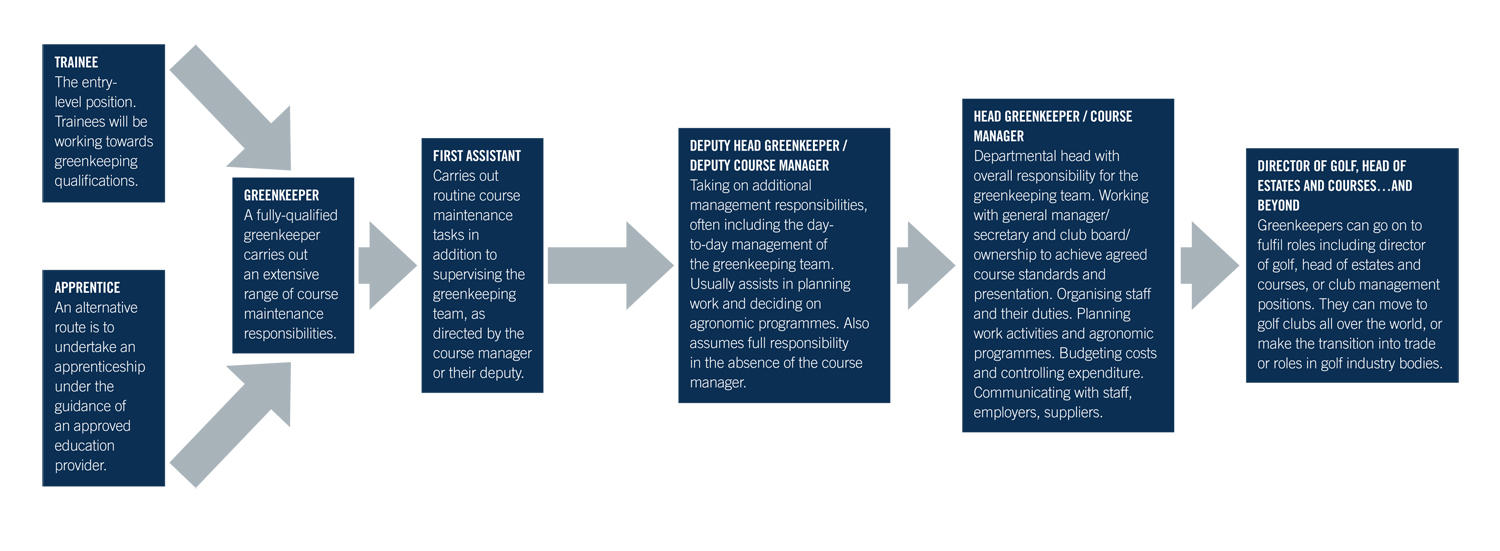Banner image by Ben Adams, Parkstone Golf Club
It takes more to maintain a golf course than you may think!
GOLF COURSES don't just happen
Golf greenkeeping is more complicated than many people may imagine because it involves a range of tasks and factors that need to be carefully managed to maintain the quality of the playing surface.
Here are just some of the reasons why:
Agronomy
Golf greens, fairways and other turfed areas are made up of carefully selected grass species that require specific growing conditions. Greenkeepers must have knowledge of soil science, plant biology and pest and disease management to maintain healthy turf.
Weather
Temperature, rainfall, wind, the availability of direct sunlight and other weather conditions all have a significant impact on the condition of a golf course. Greenkeepers must monitor the weather and adjust their maintenance practices accordingly, particularly if year-round play is to be achieved.
Irrigation
Irrigation is essential to maintain healthy turf, but it can also be challenging to get right. Greenkeepers need to ensure that the greens receive the right amount of water at the right time and in the right way to avoid over or under watering.
Course design
The placement of bunkers, water hazards and other features can impact the maintenance required to keep the greens in good condition. Every aspect of a golf course requires maintenance of some kind and this must be considered when setting staffing levels and budgets.
Environmental factors
Greenkeepers need to consider the impact of their maintenance practices on the environment. They must use sustainable practices that minimise the use of chemicals and other inputs that can harm the environment, while producing playing standards that match the expectations of the golfer.
Machinery management
Regular maintenance, repairs and proper storage ensure equipment longevity. Scheduling routine inspections, adhering to manufacturer guidelines and training staff maximises productivity, minimises downtime and enhances course maintenance quality.
Finance and purchasing
Effective budgeting, strategic procurement of equipment and supplies and negotiating contracts ensure cost efficiency. By optimising financial resources, greenkeepers can invest in essential tools, technologies and resources.
Staff training, development and management
Providing training programmes, fostering skill enhancement and promoting teamwork boosts performance and efficiency. Effective management ensures proper delegation, motivation and communication, leading to a high-performing greenkeeping team.

"Sadly, the golf club culture can be a difficult one. Very often it is easier to criticise the course you play every day, rather than see the 12-month journey that a course has to go through to stay playable."
Graeme McDowell
2010 US Open Champion

"When you have 700 members you cannot please everyone. Here at Long Ashton we have five or six on the greenkeeping staff - some 18-hole courses have to manage with even less!"
Chris Wood
Four-time European Tour winner

"May I send my thanks to all the greenkeepers who do such a great job on golf courses all around the world. Thank you."
Martin Slumbers
Chief executive, The R&A
Today's greenkeepers have spent their entire career honing their trade and gaining the knowledge and experience required to manipulate the natural environment into a golf course. It is vital, therefore, that expectation levels must be carefully managed in line with available resources, staffing and budgets and that any club activity relating to the course must be undertaken in consultation with your course manager or head greenkeeper.
Would you like to find out more about greenkeeping?
How automation is transforming greenkeeping – without replacing greenkeepers
What does a typical career path look like?
The greenkeeping profession has become highly skilled and training takes many years. The opportunities available are life-changing and greenkeepers can find themselves travelling the world, helping out at golf's most prestigious events and coming face to face with top golfers.
There are a variety of ways to become a greenkeeper. Some take a purely vocational route, others follow an academic path. However, most use a combined approach to their education and training within the industry.
Here is what a typical career path would look like:

- Membership
- Our People
- BIGGA Regions
- Our Business Affiliates
-
Greenkeeping
-
History of Greenkeepers' Associations
- About the author
- Introduction (Pre-1912)
- 1912 - 1919
- 1920 - 1929
- 1930 - 1939
- 1940 - 1949
- 1950 - 1959
- 1960 - 1969
- 1970 - 1979
- 1980 - 1987
- EIGGA 1983 - 1986
- Greenkeeper Education and Training
- Greenkeeping Families
- Greenkeepers' Associations and Golf
- BIGGA National Tournament
- Publications for Greenkeepers' Associations
- Association Officials
- Greenkeeping Acronyms
- Sustainable Golf
- Ecology Bulletin
- GreenCast Weather Forecast
-
History of Greenkeepers' Associations
- Affiliated Associations
- Women in Golf Charter
- Thank A Greenkeeper Day













